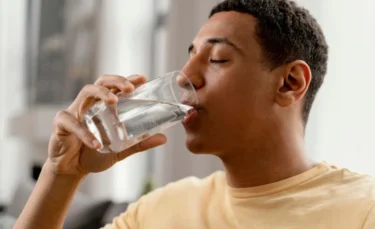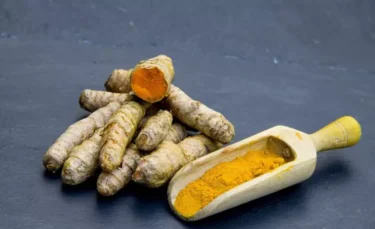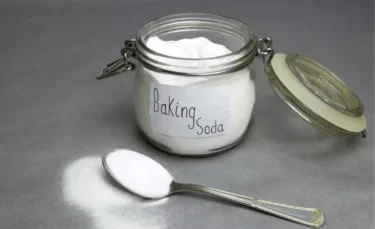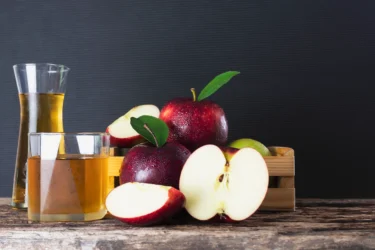Simple Positions To Relieve Gas and Bloating Naturally
By Dr. Shubham Pandey +2 more

Get,

to manage your symptom
Get your,


4 Cr+ families
benefitted

OTP sent to 9988776655



You’ve successfully subscribed to receive
doctor-approved tips on
Whatsapp

Get ready to feel your best.

Hi There,
Download the PharmEasy App now!!


Register to Avail the Offer
Send OTPBy continuing, you agree with our Privacy Policy and Terms and Conditions

Hi There,
Sign up on PharmEasy now!!
Trusted by 4 crore+ families

OTP sent to 9988776655



You have unlocked 25% off on medicines




Code: NU25
By Dr. Shubham Pandey +2 more
Table of Contents
Most individuals experience gas or bloating at some point in their lives. Trapped gas can lead to discomfort and, in some cases, pain. It is therefore important to understand safe and effective methods to manage these symptoms. This article aims to provide information grounded in scientific evidence to help you find relief1.
Various factors can cause gas and bloating and these are described below:

There are foods known to cause gas and bloating. For example, beans, onion, Brussels sprouts, dairy products, and some complex carbohydrates. These foods are typically high in fibre or contain carbohydrates that may produce gas during digestion2.
Swallowing air while eating or drinking can contribute to the development of gas. This may occur when chewing gum, eating or drinking too quickly, or consuming carbonated beverages2. In addition, factors such as stress, anxiety, and a lack of physical activity may also lead to a buildup of gas in the digestive system3.
Trapped gas can cause uncomfortable symptoms such as:
It is possible to reduce the likelihood of gas accumulating in the digestive system and the following tips may help prevent excessive gas and bloating:
If you frequently experience gas, severe bdominal pain, or notice symptoms such as unexpected weight loss, changes in stool consistency, or alterations in bowel habits, it is important to seek medical advice.
Yoga offers loads of health benefits. It is proposed to ease pain and also aid digestion. Below we have described some yoga poses that may help release trapped gas.
Wind-relieving pose is effective for gas relief as this pose presses on the stomach6, which helps push out trapped gas.
Potential Benefits
Step-by-step guide
The steps involved are described below.
A child’s pose relaxes the body and gives a gentle pressure on the gut which can help relieve gas.
Potential Benefits
Step-by-step guide
The following are the steps involved in a child’s pose:
The seated forward bend offers a deep stretch for the spine, the backs of the thighs, and the lower back. It gently applies pressure on the stomach8.
Potential Benefits
Step-by-step guide
Following are the steps involved.
Research14 shows that activated charcoal supplements may help absorb excess gas in the stomach, potentially reducing feelings of bloating and discomfort. The charcoal works by binding to the gas, which is then eliminated from the body. It is important to consult your doctor before taking any supplements to ensure they are safe and appropriate for you.
Dr. Siddharth Gupta, B.A.M.S, M.D (Ayu)
Here are some other yoga poses that may help.
If you are a beginner, it is recommended that you learn these poses under the guidance of a trained professional to prevent undue strain or injury caused by incorrect practice.
In addition to yoga, certain home remedies may also help alleviate gas. These include:

Walking or light exercise may help to facilitate the movement of gas through the digestive system, thereby preventing its accumulation9.

A gentle stomach massage may stimulate the release of trapped gas10 and may even improve digestion.

Drink a lot of water or warm herbal tea as it may help with digestion and relieve gas11.

You may consider adding certain herbs to your meals to help relieve gas. Herbs such as ginger, curcumin, peppermint, fennel, and turmeric are commonly believed to support digestive comfort12.

Add half a teaspoon of baking soda to a glass of water and drink it. This may provide relief for your stomach. However, exercise caution, as consuming excessive amounts can be harmful and may cause serious complications13.
Also Read: Simple Home Remedies For Bloating

Add a tablespoon of apple cider vinegar to a glass of water and drink it. This may help relieve gas; however, more scientific evidence is required to confirm its effectiveness. Additionally, be cautious of potential side effects associated with excessive consumption of apple cider vinegar.
Gas in the abdomen results from the fermentation of food within the digestive tract. Lactulose, a substance that is poorly absorbed in the small intestine and subsequently fermented in the colon, has been associated with bloating and a sensation of swelling in both healthy individuals and those experiencing chronic constipation15.
Dr. Rajeev Singh, BAMS
Also Read: Benefits of Doing the Plank Exercise Every Day
Here are some foods that you can add to your diet if you want to help relieve gas.
Also Read: Top Benefits of Castor Oil in the Belly Button
Gas and bloating can be uncomfortable. However, there are several methods that may help to relieve these symptoms. Practising yoga poses, such as the wind-relieving pose or child’s pose, can be beneficial. Additionally, home remedies and over-the-counter solutions may provide relief. Being mindful of the foods and drinks you consume can also make a difference. It is important to seek medical advice if you frequently experience gas, severe pain, or other concerning symptoms.
Also Read: 5 Exercises To Consider If You Suffer From Fissure
Yoga poses such as wind-relieving pose, child’s pose, and seated forward bend are often recommended. Additionally, lying on one side or performing gentle twists while lying down can also assist in easing trapped gas.
Trapped gas can persist for several hours, causing ongoing discomfort. If the gas remains for an extended period without relief, it is advisable to seek medical attention to rule out other underlying health conditions.
Yes, drinking water, hot or cold may help with digestion and gas. Hot water may be more soothing.
Lying on your left may help relieve gas. This position is beneficial because the large bowel ascends on the right side of the abdomen, crosses over the top, and then descends along the left side.
If you experience bloating but are unable to pass gas, it may indicate a digestive problem or persistent constipation. In some cases, this could be a sign of a more serious health condition. It is important to consult a doctor if you experience severe pain or other concerning symptoms alongside these issues.
You may find relief by practising various yoga poses, engaging in gentle movement, or trying home remedies or over-the-counter products. These approaches can help release trapped gas and potentially improve your comfort.
While it may be difficult to relieve bloating within five minutes, practising certain yoga poses or engaging in light physical activity may provide prompt relief.
Disclaimer: The information provided here is for educational/awareness purposes only and is not intended to be a substitute for medical treatment by a healthcare professional and should not be relied upon to diagnose or treat any medical condition. The reader should consult a registered medical practitioner to determine the appropriateness of the information and before consuming any medication. PharmEasy does not provide any guarantee or warranty (express or implied) regarding the accuracy, adequacy, completeness, legality, reliability or usefulness of the information; and disclaims any liability arising thereof.
Comments

Leave your comment...
You may also like
Comments